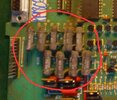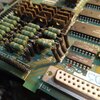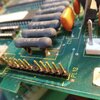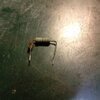Hi can anyone tell me what type of resistors these are? There are used elsewhere and split in pairs in the circuit so x2 at half value. The leads are mighty. I guess the application for them to minimise heat getting back into the board?
I was looking at replacing them all like for like or a better resistor for the job if there's anything modern or newer?
Thanks
I was looking at replacing them all like for like or a better resistor for the job if there's anything modern or newer?
Thanks








